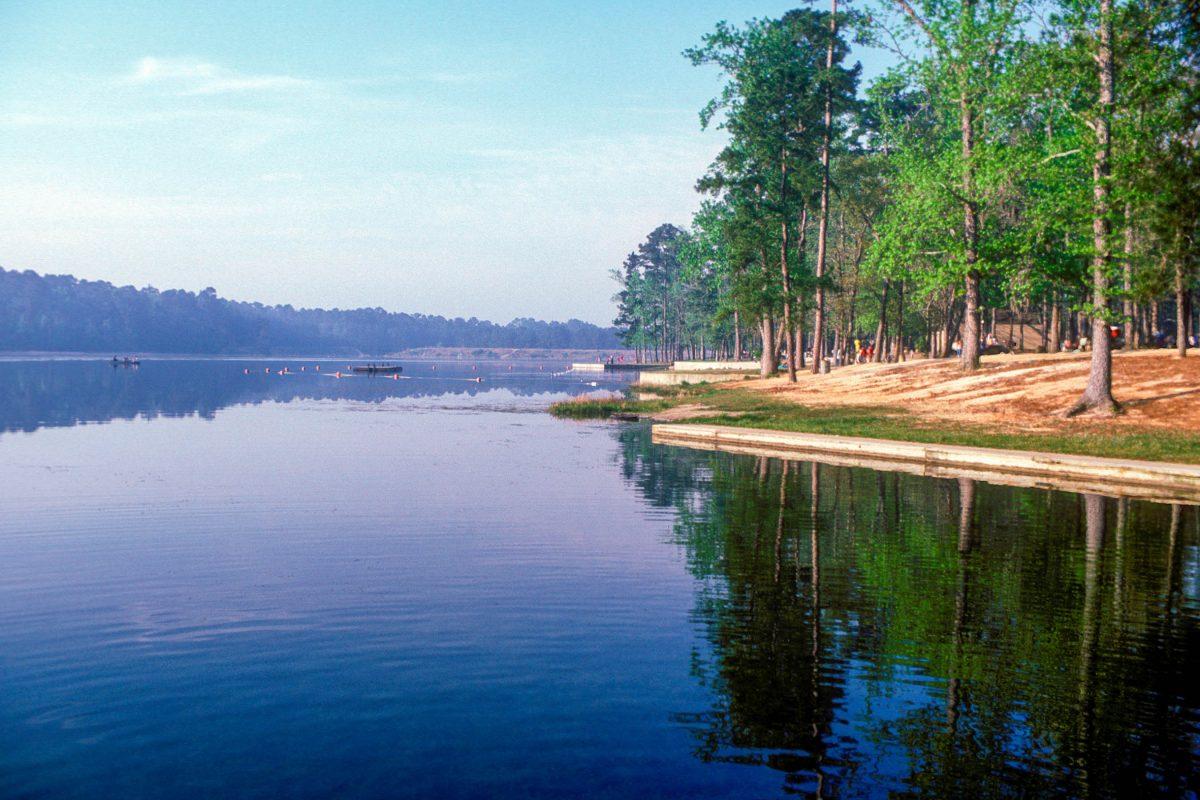Before vast landscapes were settled, flash floods and wildland fires were nature’s way of maintaining ecosystems. Hundreds of years later, parkland restoration is often at odds with modern agriculture.
Nestled in the Hill Country, Pedernales Falls State Park and the area surrounding used to be mainly grasslands subject to frequent flash floods and wildfires, said Stephen Garmon, the interpreter and volunteer coordinator at the park. This was actually beneficial since it naturally got rid of invasive species, Garmon said.
German settlers migrating to the hill country in the 1800s transitioned the land use to farming and ranching, which caused soil loss, explained Garmon. It also destroyed the grasslands.
“Anytime they would harvest, most roots would die out and soil would wash away with the next flash flood,” Garmon said. “We lost a lot of that soil, we lost a lot of the grassland. And the only plants and trees that were able to really flourish in the new environment were the ashe juniper.”
While ashe juniper is native to Texas, Garmon said it usually grows only in areas with weedy, bad soil. The park’s history of ranch and farm use had left the soil ruined for diverse, native plants by the time the state acquired it.
“When Parks and Wildlife bought this park back in 1970, we realized right off the bat that this is going to be a difficult park to manage because we can’t just keep it like it is,” Garmon said.
Around 200 miles east of Pedernales, the battle is to protect native species from invasive aquatic plants and zebra mussels that have challenged the Huntsville State Park’s ecosystem, said John Herron, park interpreter.
“Hydrilla, large salvinia and zebra mussels are not native to our lake,” Herron said. “They come in and they tend to overpopulate and choke out the native wildlife.”
Managing the invasive species in the lake is handled by the Inland Fisheries Department, explained Herron.
“Currently, they are using a targeted herbicide to deal with the Hydrilla in the lake,” Herron said. “They are leaving some controlled pockets of it as it is a nice habitat for growing fish. I know they are running tests on the large salvinia that we have.”
Huntsville assistant park superintendent Jessica Bright said “Leave No Trace” is the message Texas park interpreters and guides use to educate visitors of their duty to protect the ecosystem. Park boaters who properly clean their boats before and after use are vital in the ongoing battle against invasive species, she explained.
“I know that through many interpretive programs, I do swing back to always emphasizing leaving no trace,” Bright said.
Visitors are recreating as intended, but there are clues that not everyone has gotten the message.
“They’re leaving trash behind,” Bright said. “They’re not staying on the trails so they’re creating new footpaths, and they are feeding the wildlife.”
No matter which park it is, visitors have to stop being the problem and be the solution to reclaiming ecosystems, Garmon said.
“Staying on trails, keeping your campfires in the fire rings, picking up after yourselves and using as little water as possible while you’re in the park are very impactful,” Garmon said.
It comes down to stewardship and respect by park visitors, Bright said.
“It’s not just cleaning up your own mess,” Bright said, “but leaving the park cleaner and better than you found it.”
This story is a collaboration between The Battalion and upperclassmen in Texas A&M’s journalism degree. To see the online copy of the Climate Change extra print edition, click here.




















